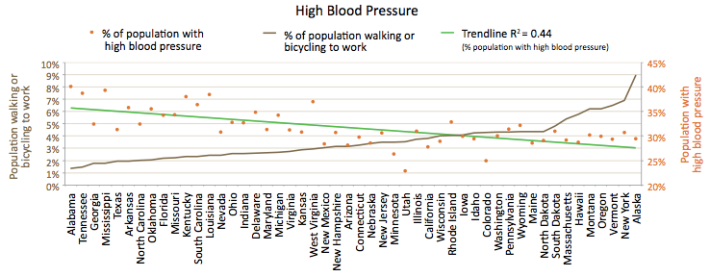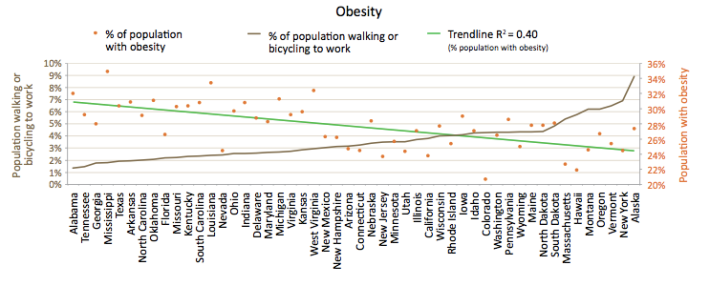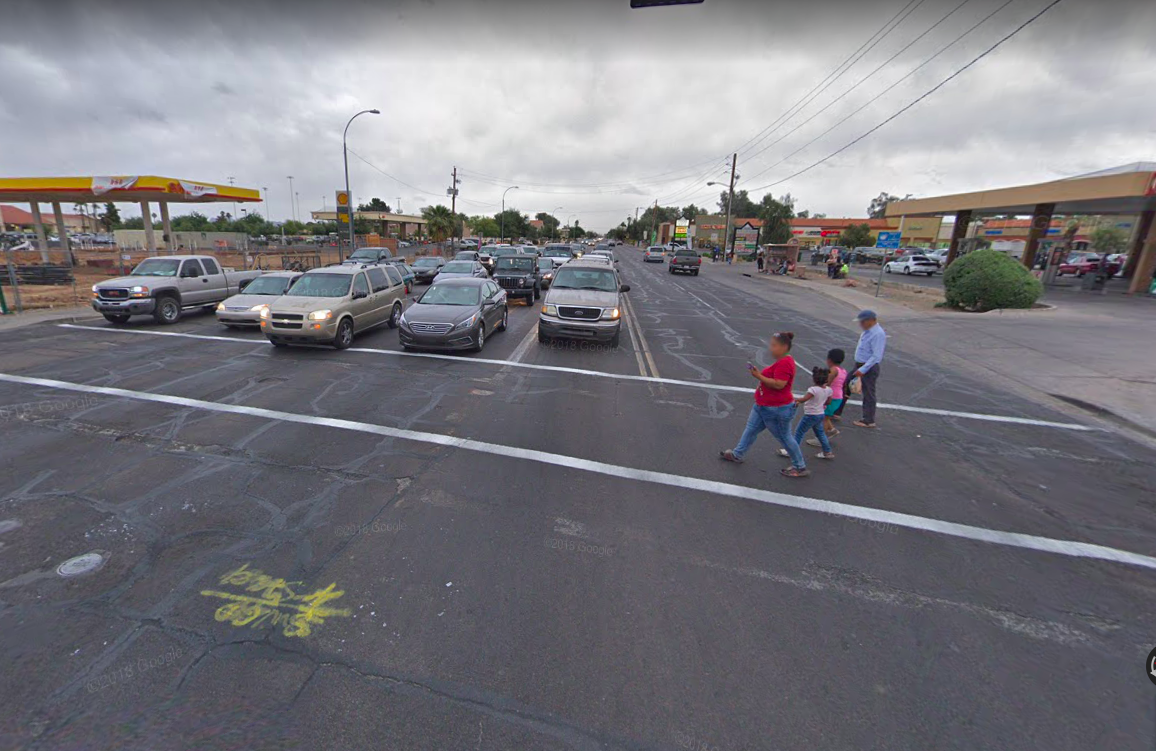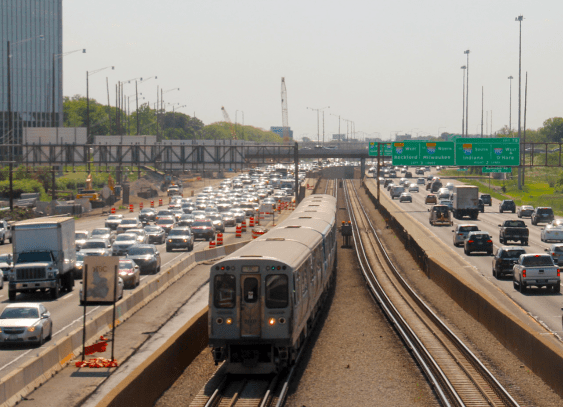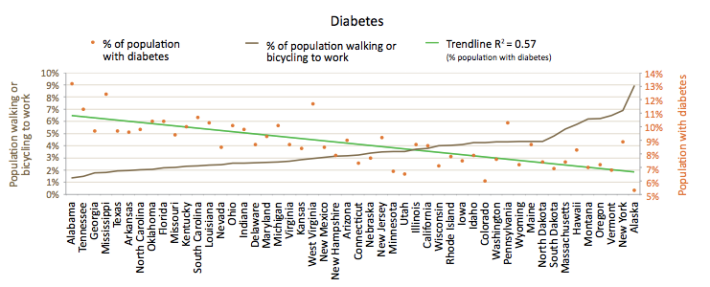
New data from the Alliance for Biking and Walking's 2014 Benchmarking report bears out the notion that people tend to be healthier in cities where walking and biking are more prevalent.
The Alliance compiled active commuting rates in the 50 largest American cities as measured by the U.S. Census. Then it compared that data with health information from the CDC. On health outcomes like diabetes, obesity, and high blood pressure, a pretty clear correlation emerges.
Not all of it can be explained by active commuting, of course. But notice how, in the top chart, as statewide active transportation rates increase, diabetes rates decline.
About 9 percent of Americans have diabetes, but the incidence varies greatly between different places. Diabetes tracks closely enough with walk and bike commute rates that the Alliance and other researchers have concluded there's a strong correlation.
Rates of elevated blood pressure display a similar pattern:
And the same holds for obesity:
Clearly there are a lot of factors at work here, and there are limitations to the conclusions you can draw from these types of statistical correlations. But this geographical study from the Alliance helps confirm that across the U.S., active commuting is a good predictor of broad public health metrics.
"People are healthier in states where more people bike and walk," said Alliance spokesperson Mary Lauran Hall. "These states' governments are facing a great opportunity to encourage more folks to bike and walk in the interest of boosting public health."
